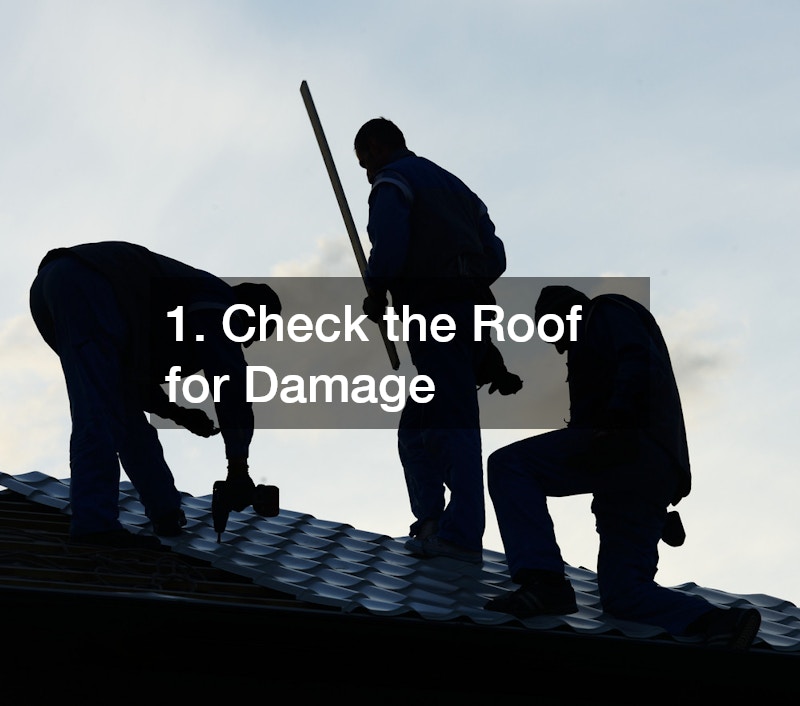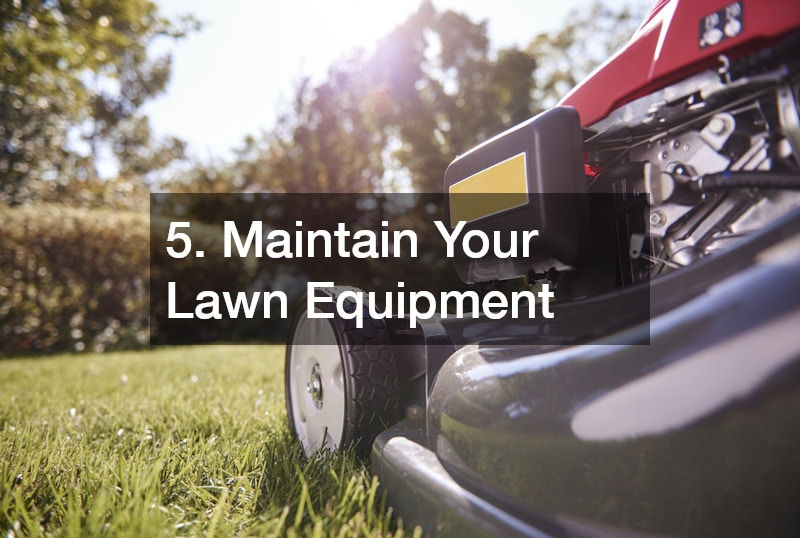Home improvement is a top priority for many homeowners as the fall season approaches. The Joint Center for Housing Studies of Harvard University has recently released data that shows a dramatic increase in spending on home improvements. From $328 billion dollars in 2019 to $485 billion estimated in 2024. This increase in spending on home improvements reflects a commitment to improving comfort at home and maintaining the value of property. As the weather gets colder, it is important to perform seasonal maintenance that will not only prepare your house for winter but also prevent costly repairs in the future.
This guide will walk you through the essential tasks of fall maintenance, including inspecting your roof and ensuring that your HVAC system runs efficiently. Follow these steps to ensure that your home is in the best possible condition and provides comfort and protection during the winter months.
1. Check the Roof for Damage

It is important to maintain your roof in good shape. Begin by performing a visual roof inspection, either using binoculars or from the ground. Look for signs of damage, such as cracked, curled, or missing shingles.
You should pay special attention to the areas surrounding chimneys, skylights, and vents, as this is where leaks are most likely to occur. Call roofers as soon as you see any signs of damage to prevent leaks, structural damage, or water damage.
Roofers can help with more complex repairs. While simple fixes like replacing a few roof shingles are doable, they may need the assistance of a professional. You should also inspect your roof following heavy winds or storms, as they can cause damage that is not immediately visible. Roof maintenance is a small investment that can prevent more costly problems in winter when snow and ice can worsen existing damage.
2. Clean the Gutters
Gutters are important in protecting the foundation of your home by diverting water away from it. Clogged gutters may cause water damage, leaks, and even mold. In the fall, leaves, twigs, and other debris can accumulate in your gutters. Cleaning them should be a priority.
Use a ladder to reach your gutters. Remove any visible debris. To remove the debris, you can use either a gutter scoop (while wearing protective gloves) or your hands.
After cleaning the gutters, use a hose and flush them to make sure they drain properly. Attention should be paid to the downspouts as they can become clogged easily and cause an overflow. It’s important to fix the problem before winter arrives if water is not draining properly.
Installing gutter guards may reduce the frequency with which you clean your gutters, and they can also protect them from clogging in the future. Maintaining a well-maintained system of gutters is crucial for preventing all water-related problems throughout the year.
3. Check the HVAC System and Furnace
Your furnace and HVAC system are going to be working overtime as soon as the weather gets colder. It’s important to have your heating system tuned up, schedule furnace repairs if necessary, and get a professional inspection before the cold weather arrives.
A technician will perform this checkup to ensure your system is working efficiently. Regular maintenance will help you to avoid unexpected breakdowns and extend the life of your HVAC system.
You can do some tasks yourself in addition to hiring a professional. Regularly replace air filters, as dirty ones can reduce airflow and cause your system to work harder. It not only leads to higher energy bills, but also lower indoor air quality.
To prevent heat loss, you should also check for any leaks in your HVAC air ducts. Sealing your ducts properly can increase the efficiency of your HVAC system and ensure warm air is distributed throughout your home.
Installing a programmable home thermostat can help you better manage the heating schedule in your house. This will allow you to optimize energy usage and lower utility bills.
4. Clean Your Fireplace and Chimney
It is important to prepare your wood-burning fireplace for the winter months. This will ensure both safety and comfort. As time passes, creosote and soot buildup in your chimney can cause a fire.
Have your chimney cleaned and inspected by a professional before you start your first fire for the season. If necessary, make any repairs so that it’s safe and working properly. Chimney sweeps are able to remove creosote, inspect for structural damage, and make sure the chimney cap is secured.
It’s a good idea, beyond cleaning the fireplace and damper, to check them. The damper must be able to open and close with ease, sealing off the chimney when it is not being used. Consider repairing any damage or cracks in the fireplace’s masonry before lighting a flame. Regular maintenance will not only keep your fireplace safe, but it will also increase its efficiency. This allows you to enjoy cozy evenings in front of the fire throughout the season.
5. Maintain Your Lawn Equipment

It’s time to clean and maintain your lawn equipment before you store it away for the winter. Maintaining your lawnmower, trimmer, and other tools will ensure that they are ready for spring.
Clean all equipment thoroughly, removing grass clippings and other debris. Gas-powered equipment should be run dry, or a fuel stabiliser added to the tank to stop the fuel degrading during the winter.
Also, sharpening the blades of your lawn mower and changing its oil are important steps. Sharp blades will give you a cleaner, more efficient cut. They also reduce stress on your lawn and help it to recover faster. Replace spark plugs, air filters, and other parts if necessary.
Consider using lawn equipment and part services if you need to replace or maintain your equipment. By taking the time now to service your lawn equipment, you can avoid expensive repairs and ensure that everything runs smoothly at the start of the next season.
6. Trim Trees and Bushes
Trimming back trees and shrubs in the fall will ensure that they are healthy and won’t pose a threat to your home or property this winter. Snow and ice can make overgrown branches dangerous, causing potential damage to your roof, home, or power lines.
Trim any dead or diseased limbs first since they are the most likely to snap during a storm. Concentrate on trimming limbs close to your house, particularly those that hang near windows or overhang the roof.
In addition to safety, pruning your trees and shrubs can improve their health and appearance. Removing excessive growth improves air circulation and sunlight penetration. This reduces the risk of diseases.
Avoid over-pruning when trimming. Too much pruning can weaken the plant and make it more susceptible to cold temperatures. Consult a professional arborist for advice if you are unsure of how much trimming to do.
7. Driveways and Walkways Should be Inspected
If you ignore cracks in your driveway and walkway, they can grow into bigger problems. This is especially true during the freeze-thaw cycles that are common in winter. Even small cracks can be enlarged by water that seeps into them. This can cause significant damage over time that is costly to fix.
Seal any cracks and holes before winter. Sealing walkways and driveways is an easy DIY project. A home improvement store sells crack filler and sealing agents that you can apply to the affected areas.
Consider driveway paving for more severe damage or complete renovations to guarantee a smooth and durable surface. Sealing your pavement will not only prevent further damage but also give it a new look and make it easier to shovel the snow. By taking care of your driveways and walkways, you can make them more durable and safer during the winter.
8. Prepare Your Water Heater
It is important to prepare your water heater for the increased demand during the colder months. The tank should be flushed to remove any sediment that can cause damage and reduce efficiency. The sediment settles in the bottom of the tank, where it acts as insulation between the water and the heating element. This makes the system work harder. Once a year, draining and flushing the water heater will keep it working efficiently and prolong its life. Consider scheduling water heater service to ensure everything is working optimally.
Checking the temperature on your water heater is another important tip. It is recommended to set it at 120degF, which is hot enough for your needs and reduces the risk of scalding. Consider adding an insulation blanket to your older water heater, especially if you have it in a cool area such as a basement or garage. Maintenance is important to save money on energy costs and ensure that you have hot water available when needed.
Check the anode in your water heater. Anode rods help prevent corrosion in the tank. If they are worn out, it can cause the tank to degrade. Replace a corroded rod to prevent leaks in the tank and extend the life of your heater. If you hear unusual noises such as rumbling or banging, this could be a sign that sediment has impacted the system and needs to be dealt with immediately by a professional.
9. Install Impact Windows and Doors
Installing impact windows and door can add an extra layer to your home’s protection if you live in an area prone extreme weather conditions. These windows and doors have been designed to resist high winds, flying objects, and even burglaries.
The impact-resistant glass is laminated to a durable film which holds it in place, even if the glass breaks. This reduces the risk of injury as well as preventing wind and water from entering your house.
Impact windows and doors offer more than just safety. They also provide greater energy efficiency. They offer superior insulation that reduces drafts and keeps your home warm during the winter.
It’s essential to hire experienced installers of impact windows in order to ensure a proper installation. It can save you a lot of money on your energy bill.
Many insurance companies also offer discounts to homes with impact-resistant features. This can offset the initial cost. Impact windows and doors can be a great choice for homeowners who want to upgrade for energy efficiency, safety or comfort.
10. Check Attic Ventilation and Insulation
Insulation and ventilation are essential to maintain a comfortable temperature indoors and reduce energy costs in the winter months.
Check your attic insulation and make sure it is evenly distributed. Adding more insulation to your home can be helpful if you feel your home is drafty or if energy bills seem unusually high. Insulation types include fiberglass batts and spray foam. Your home’s needs and budget will determine the best choice.
It’s also important to make sure your attic is ventilated properly. A good ventilation system allows moisture to be removed from the attic, which can cause mold and mildew. For proper airflow, you can use ridge vents and soffit or gable vents.
It is important to have a well-ventilated loft. This will not only help protect your home structure, but it will also make it easier for you to maintain an even temperature in the house. This improves comfort and reduces heating costs.
Conclusion
It’s more than just raking the leaves. You want to make sure your home is comfortable and safe for the upcoming winter months. This comprehensive checklist will help you to identify potential problems before they become costly repairs. It will also protect your home against harsh weather conditions and give you peace of mind during the fall. These proactive steps, whether it’s checking your roof for damage or tuning up your HVAC, will keep your home running smoothly and warm all winter. Start your fall home care now, before the first frost. This will ensure a comfortable and trouble-free season.
